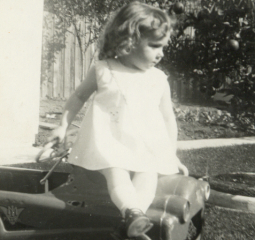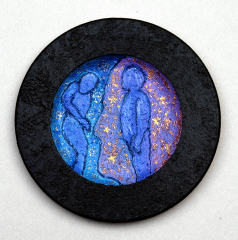Catatonia in those with autism?
More and more books are now looking at Catatonic episodes in those on the autistic spectrum. Read the rest of this entry »
More and more books are now looking at Catatonic episodes in those on the autistic spectrum. Read the rest of this entry »
A friend dropped by yesterday and I my medication hadn’t yet kicked in. I’m usually pretty manic last thing at night and first thing in the morning (yes, would drive many people nuts!). But I drink Lemon Balm tea, which is a muscle relaxant and makes me pretty laid back, quite mellow. The result? Mellowmania. Read the rest of this entry »
 Reactive Attachment Disorder (RAD) used to be associated with orphans in Romanian orphanages, the battered, neglected and abused children of some disturbed or addict mothers or children given up for adoption. But what if, like autism, RAD is actually a spectrum? Today, the causes of RAD are far more diverse Read the rest of this entry »
Reactive Attachment Disorder (RAD) used to be associated with orphans in Romanian orphanages, the battered, neglected and abused children of some disturbed or addict mothers or children given up for adoption. But what if, like autism, RAD is actually a spectrum? Today, the causes of RAD are far more diverse Read the rest of this entry »
 I am speaking in August in New Hampshire and found one of my co-presenters is Jamie Burke so looked him up. I so enjoyed reading of Jamie’s progression from facilitated, typed communication into functional, interactive speech, that I really felt compelled to share it Read the rest of this entry »
I am speaking in August in New Hampshire and found one of my co-presenters is Jamie Burke so looked him up. I so enjoyed reading of Jamie’s progression from facilitated, typed communication into functional, interactive speech, that I really felt compelled to share it Read the rest of this entry »
 Autism expert Bernard Rimland had time for people. And he made time for me. Read the rest of this entry »
Autism expert Bernard Rimland had time for people. And he made time for me. Read the rest of this entry »
This morning I ran a bath. I then announced to my husband Chris that I could now run baths.
I’m 43.
I’ve been trying to run baths for 28 years. Read the rest of this entry »
 I wrote that finding out I was autistic gave me “hope for forgiveness”. When I friend asked me what this phrase meant, Read the rest of this entry »
I wrote that finding out I was autistic gave me “hope for forgiveness”. When I friend asked me what this phrase meant, Read the rest of this entry »
 I was recently sent an extraordinary video clip which I sent out to those signed up to my mailing list. I got such a wonderful response from people after that clip that I thought I’d make it available to the rest of you. Read the rest of this entry »
I was recently sent an extraordinary video clip which I sent out to those signed up to my mailing list. I got such a wonderful response from people after that clip that I thought I’d make it available to the rest of you. Read the rest of this entry »
 Fellow author, Temple Grandin, wrote and lectured much on ‘thinking in pictures’, imagining that, because a majority of high functioning people with Asperger’s did think in pictures (though many were auditory thinkers who thought in words) that, therefore, this was indicative of how ALL people with autism thought. On this basis she claimed that as ‘the woman who thinks like a cow’ that not only all autistic people think in pictures, but went further to project this predominant visual thinking style onto animals too. In fact visual thinking is the most common mode of thought for ALL people – around 60 %-65% of the population think in pictures. So how about the rest of us? Read the rest of this entry »
Fellow author, Temple Grandin, wrote and lectured much on ‘thinking in pictures’, imagining that, because a majority of high functioning people with Asperger’s did think in pictures (though many were auditory thinkers who thought in words) that, therefore, this was indicative of how ALL people with autism thought. On this basis she claimed that as ‘the woman who thinks like a cow’ that not only all autistic people think in pictures, but went further to project this predominant visual thinking style onto animals too. In fact visual thinking is the most common mode of thought for ALL people – around 60 %-65% of the population think in pictures. So how about the rest of us? Read the rest of this entry »